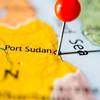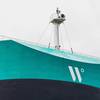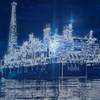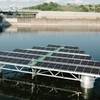Standardization for Cost Effective Pipeline Innovation - DNV GL
-40 years of standardization paves way for cost efficient offshore pipeline systems -
Growing global energy demand and requirements for additional pipeline capacity are driving the pipeline segment. However, pipeline related innovation is prioritized by only 4% of senior oil & gas professionals, according to research by DNV GL, the technical advisor to the oil & gas industry. Further, the research shows that nearly one in five oil & gas companies (18%) do not have a strategy in place to maintain innovation.
Six in ten (61%) respondents agree that operators will increasingly push to standardize their delivery globally, up from 55% in 2015 and 52% in 2014. The most common strategy for maintaining innovation with lower budgets is to increase collaboration with other industry players (45%). DNV GL have over the years facilitated a vast number of industry collaborations, capturing best practice into flexible industry standards, allowing innovation to evolve within safe and cost effective frameworks.
“Despite a lack of focus on long-term innovation, it is positive that the industry sees the potential for collaboration and standardization. DNV GL’s pipeline standard is a great example of what industry collaboration can achieve regardless of the peaks and troughs in oil price. The standard is 40 years old this year but we will not be resting on our laurels. It is a dynamic standard being continuously updated.
“The standard anticipates what’s coming next through collaboration with the pipeline industry. At all times there are 5-10 ongoing pipeline related joint industry projects run by DNV GL and we provide a forum for 30 leading companies to discuss challenges and priorities,” says Asle Venås, Global Segment Director for Pipelines, DNV GL – Oil & Gas.
The industry’s focus on cost makes the standard even more beneficial for the industry as it enables flexibility in design and this optimization results in cost efficiency while maintaining an acceptable safety level. DNV GL is actively embracing the current industry push for cost saving, and has launched the EC-PIPE initiative2 as part of its innovation programme. The project aims to identify measures to safely reduce costs through effective risk management, developing new technologies & solutions, effective pipeline integrity management tools, reducing installation costs, and life extension program.
"Statoil appreciate the close and long-term cooperation with DNV GL with focus on developing high quality offshore standards and recommended practices for submarine pipelines. Continuous development and improvement of these standards have paved the way for cost efficient offshore pipeline systems – a key contributor to value creation in Statoil's successful development and safe operation of pipeline networks," says Jostein Breivik, Chief Engineer Pipeline and Transport Technology, Statoil ASA
DNV-OS-F101 provides firm guidance for design, construction and operation, which has made it the global leading standard primarily for offshore submarine pipelines. It has been used for many high profile pipeline projects ranging from South Stream in the Black Sea, through to Langeled and Polarled in the North Sea to Wheatstone and Ichthys in Australia. It was the first and remains one of the few limit state design codes available for pipelines. The standard is risk based and based on load and resistance factor design (LRFD) format with calibrated design factors and it meets the requirements of ISO.
“Many in the industry think of DNV GL as a verification body, but this only represents approximately 20-30% of our activity within the Pipeline segment. We are heavily involved in R&D and qualifying new technology, delivering early phase studies and providing advisory services in field developments.
“During the operational phase our focus is on optimizing pipeline operations, extending pipeline life, safely saving costs and in the case of pipeline failure, finding smart repair solutions. It is our knowledge of our pipeline Standard that enables us to find the best and most cost effective solutions. Our involvement in pipeline projects globally also helps us to continue to develop the standard,” continues Venås.
Looking ahead, the pipeline segment will be challenged to use the ever increasing amounts of data in a smart way. “Our customers are telling us that smart use of the increasing amount of data available is a key challenge for the industry in the next 20 or so years, as well as meeting sustainability challenges. We are exploring how the industry can leverage the potential for data with joint industry projects and ongoing research.
Fact Box
* DNV GL’s first pipeline code was issued in 1976.
* It has achieved global recognition, winning prestigious industry awards including:
* 65% of all new projects globally are designed to DNV GL’s pipeline code.
* The standard has been translated to Russian and is used as the governing Russian standard for Offshore pipelines
* Australia’s standard specifies that the safety, design, materials, fabrication, installation, testing, commissioning, operation, maintenance and abandonment of submarine pipeline systems must be in accordance with DNV OS-F101.
* All pipelines on the Norwegian Continental Shelf including both flowlines and trunklines have been designed to comply with the standard.
* Over the last forty years DNV GL has built on its pipeline expertise to offer global assurance and advisory services for pipeline systems and components that optimises the use of the standard to bring cost savings and challenge the requirements of every code without comprising on safety.
* The standard is supported by 14 Recommended Practices
* DNV GL invests 5% of its revenue in R&D to enable sustainable long-term competitiveness for its customers
* DNV GL’s flow centres in the Netherlands, Norway, the UK and the US, are some of the largest high pressure natural gas flow facilities in the world, delivering specialist services to the on- and offshore oil and gas pipeline industries. They can test to a wide range of pressures up to 60 bar and flow rates up to30 million scmd.
* Ensuring that the right material is selected, specified, delivered and installed is a key aspect of every successful pipeline project. DNV GL owns and operates material laboratories and testing facilities in Germany, Norway, Singapore, the UK and the US.
* DNV GL’s Spadeadam Test Site is the world’s largest full-scale testing centre, carrying out discreet destructive and non-destructive experiments, investigative testing and technical project work for the oil and gas sector. From flammable gas dispersion and pipeline fracture tests to vapour cloud fires and hazard awareness training, typical projects for pipeline operators will generally feature: flammable or toxic gases, high pressures or temperature, cryogenic liquids, high explosives, risk of loss of containment and rapid data capture.
* DNV GL also provides many of the market leading pipeline software such as Synergi Pipeline and Sesam Pipeline










